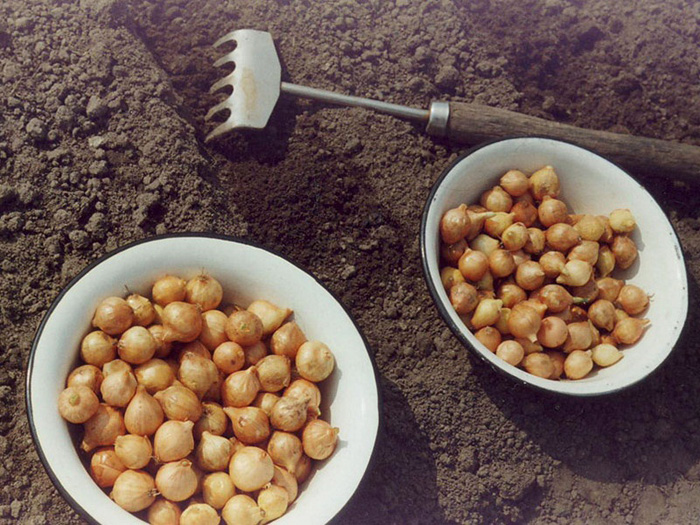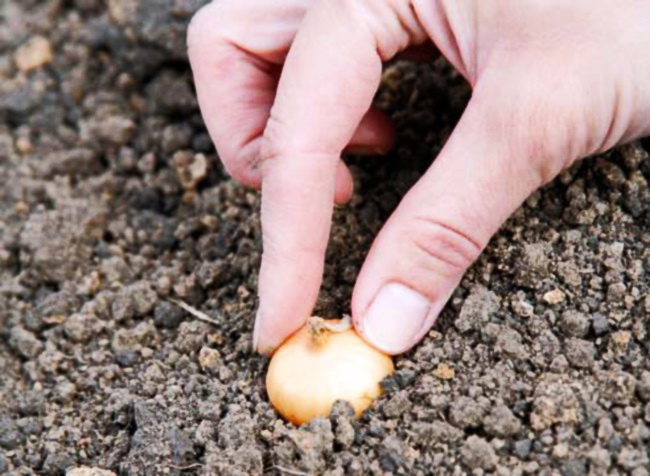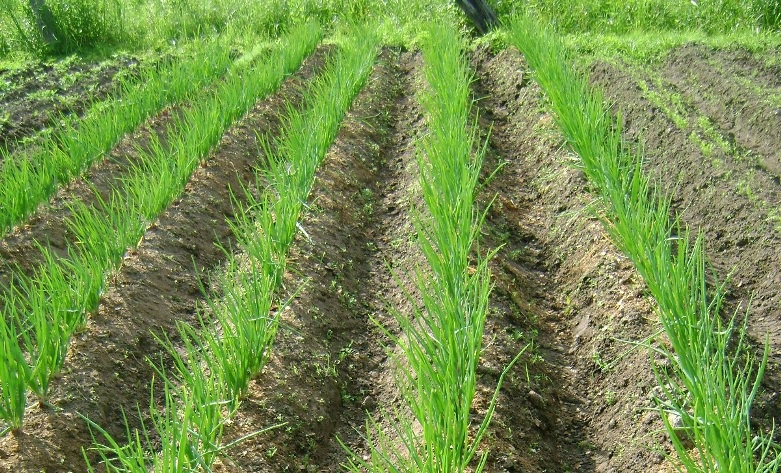Instructions for planting and caring for onions
Content
Timing and methods
You can plant bulb seeds in two passes - in spring and before winter. Planting in late autumn has a number of advantages, and most importantly, getting an early harvest of fresh young onions in mid-spring with the first warm rays of the sun. Not all varieties of seeds are suitable for podzimny planting of onions. First of all, pay attention to the resistance of the variety to frost. For northern latitudes and middle latitudes, varieties that were bred for southern conditions are not suitable, so always check with seed sellers for information about zoning.
Experienced experts recommend using varieties such as Arzamassky, Danilovsky, Bessonovsky, Strigunovsky and others. Planting onions before winter should be done with dry sets so that the heads do not begin to germinate ahead of time. As for the timing of landing, everything is individual here. On average, the sowing period lasts from October 15 to November 15. Although in some regions it is better to land earlier or later. The main thing is that the seeds, before the onset of stable frosts, have time to take root, but do not begin to germinate. Then good spring shoots are ensured. You can plant seeds in separate holes or in ridges with a distance of about 7 centimeters. For podzimny planting, the seeding depth should be 5 centimeters.
 Planting onions in spring is technologically not much different from sowing in winter. It is necessary to land the sevets after the frost retreat. Each region will have its own terms. In the south, the soil is ready for excavation in early to mid-March. In mid-latitudes and in the north, you will have to wait until mid-April-early May. In order for the plants to grow well, it is important to prepare the soil in the fall. For spring planting, it is recommended to buy fresh seedlings from professional stores. Firstly, you will be sure of the selected variety, and secondly, storing seeds from autumn at home is quite problematic.
Planting onions in spring is technologically not much different from sowing in winter. It is necessary to land the sevets after the frost retreat. Each region will have its own terms. In the south, the soil is ready for excavation in early to mid-March. In mid-latitudes and in the north, you will have to wait until mid-April-early May. In order for the plants to grow well, it is important to prepare the soil in the fall. For spring planting, it is recommended to buy fresh seedlings from professional stores. Firstly, you will be sure of the selected variety, and secondly, storing seeds from autumn at home is quite problematic.
Preparing planting material
Before planting onions, you need to carefully check and prepare them. If the seeds of the desired varieties were stored for a long time in a cold, dry room at a temperature not higher than + 18 ° C, then before planting the seedlings it is imperative to warm it up so that the growth processes begin in the heads. Warming up the seeds should be carried out gradually in several stages. First, the onion heads are left for 2-3 weeks at a temperature of + 20 ° C. After that, it is necessary to create conditions with a temperature of + 30- + 40 ° C for 8-10 hours. This will help keep the onions from shooting and will stimulate the growth of the young plant. In no case overheat the seedlings, then the yield may noticeably decrease. If long-term preparation of the onion for planting is not possible, then before planting it can be soaked in hot water (up to 50 ° C) for 10-15 minutes and transferred to cold water.
To get fast germination and a good harvest, many gardeners use growth stimulants.The nutrient solution can be prepared with Zircon, Rost-1, Humisol. These products are suitable for all types of onions. Also, don't forget to sort out the seeds. Rotten, soft, blackened, cut specimens are not suitable for planting.
There should be no signs of plant diseases on the heads (whitish bloom, brown spots), otherwise the disease will attack young onions. Soaking the onions before planting will help protect you from such troubles. Copper sulfate protects well from fungal infections. For 10 liters of water, take 1 teaspoon of the product. A weak solution of potassium permanganate is also suitable for processing.
Video “How to Landing Correctly”
Planting onions
This culture loves to maintain the correct crop rotation. The best predecessors are tomatoes, pumpkin, parsley, dill, zucchini. It is not recommended to plant seeds after garlic, carrots and other representatives of this species. In order for the bulbs to grow as large as possible and not interfere with each other, it is important to observe the distance between the seedlings. On average, it should not be less than 6 centimeters, but it all depends on the type of onion, the shape and size of the head.
The onion planting scheme is pretty simple. The seed heads must be seated gently with the roots down. The bulbs must be completely covered with soil. Depending on the variety and personal preference, you can plant the seeds in single holes or in continuous rows. The soil should be loose and warm. Set up the plot in a sunny and quiet place.
Pre-planting care necessarily includes soil treatment with organic and mineral fertilizers. Vegetables love fertilized and fertile soil. Wood ash and ground chalk help stabilize the acidity of the earth. Mineral fertilizers are not recommended to be applied in large doses. It is better to stretch the planned amount of dressings for the entire growing season and add everything in 3 doses. We considered the timing of planting onions above.
Plant care consists in timely watering, loosening the soil and removing weeds. Moisture is important for the formation of lush greenery and an elastic head, but in no case should you overflow the planting. Especially before harvesting. Wet bulbs will not store well and will rot quickly. You need to loosen the earth once a week. If the soil becomes hard, then the underground part of the plant will grow poorly.
With insufficient growth of greenery, the introduction of urea and mullein should be included in the care. When the plant reaches 15 centimeters in height, it is important to carry out preventive spraying with copper sulfate. Such care will protect the site from fungal diseases.
Harvesting and storage of crops
If the preparation of the onion for planting and the subsequent care were carried out correctly, then the harvest will certainly delight you. Harvesting is planned for September, when the feathers no longer grow and begin to fade, and golden poured heads peep out of the ground. Before harvesting, the ridge is not watered for 2-3 weeks. It is also important to pick a dry day for digging out the crop. After harvesting, the onions must be peeled from roots and tops. They are not cut at the very root, but 1-2 centimeters are left so as not to damage the bulb itself and provoke rotting.
Then the crop must be well dried. For this, a ventilated room or a canopy on the street is suitable if the weather is sunny. You cannot leave the onion in the open sun, it will begin to turn green. After 2-3 weeks of drying, the crop is placed in boxes or wicker baskets, rejecting all unhealthy and spoiled heads. Store onions in a cool, ventilated room. Do not put your crops in plastic bags. Your main task is to provide air access, otherwise decay processes will begin. It is good to keep onions hanging in the pantry.
Video "Sowing onions from seeds"
The video popularly describes the basic techniques that must be followed when planting onions in the beds.




